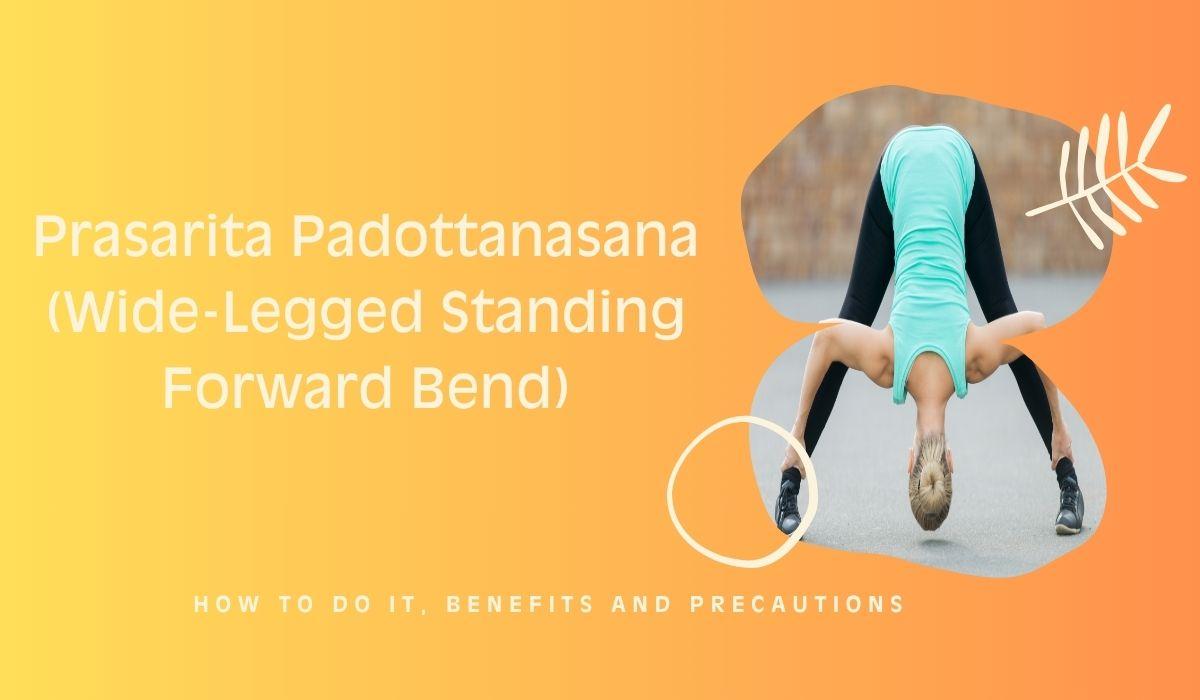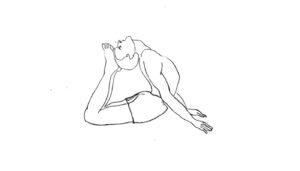Prasarita Padottanasana (Wide-Legged Standing Forward Bend) : How to do it, Benefits and Precautions
Prasarita Padottanasana, or the Wide-Legged Standing Forward Bend, is a yoga position that invigorates and centers one’s being. This pose is often done in the middle or towards the end of the session. It is a blend of physical and mental cleansing, energizing stretching and grounding calming inversion. Today, let’s discuss how to safely and effectively do this pose to reap its numerous benefits while ensuring a safe and breathtaking journey.
How to Do Prasarita Padottanasana
As beautiful as it may look, Prasarita Padottanasana requires dedication to breath control, energy distribution, and proper alignment. Here is a guide to assist you achieve to achieving your final pose.
Step-by-Step Instructions:
- Start in Tadasana (Mountain Pose): Hands by your side, feet together, shoulders rolled back, stand tall at the top of your mat.
- Step your feet wide apart : Turn towards the long edge of the mat and take a wide stance, about 3 to 4 feet apart with your feet parallel, the outer edges aligned facing the mat.
- Place your hands on your hips: Inhale while lifting your chest to straighten and elongate your spine.
- Exhale and hinge forward at your hips, not your waist, lowering your torso between your legs.
- With respect to your flexibility, you can either place your hands on the mat under your shoulders or hold your big toes or ankles.
- Engage your thighs and press the feet into the mat while retracting the shoulder blades to avoid rounding the back.
- Hangs loosely by your neck, or rest on a block for a more restorative variety.
- Take deep breaths while maintaining the posture for five to ten breaths, or up to a minute, then slowly relax and rise while inhaling.
Check Out Yoga Teacher Training in India
Modifications and Variations:
- With tight hamstrings, inhaling to rest with arms overhead is plantar-flexion. Hence, retaining a slight bend at the knees or hands on blocks is beneficial.
- To increase rotation at the shoulder girdle, lift arms so they are in line with ears while folding forward.
- Beginners may also use a wall to aid in maintaining balance.
Benefits of Prasarita Padottanasana
This position mixes one’s physical and mental well being. It is a common yoga position embraced for enhancing rejuvenation and tranquility.
Physical Benefits:
- Loosens the hamstrings, calves, and lower back muscle groups with tension built up due to sitting or standing for long periods of time.
- Enhances the strength of the legs and spine thereby improving balance and posture to some degree.
- Enhances the function of the abdominal organs by improving digestion and metabolism.
- Offers a gentle form of inversion, improving circulation to the brain.
Also Read: Kapalbhati Pranayama
(Mental and Emotional Benefits:)
- Slowing the breath helps ease tension, stress, anxiety and even mild depression which calms the mind.
- Mindfully aids in restoring energy and reduces fatigue.
- Assists the person to give up control and allows self-reflection, which makes them feel more anchored and connected enhancing grounding.
Energetic and Spiritual Benefits:
- Strengthens the Muladhara (Root) chakra, increasing feelings of security as well as making one feel more grounded.
- Stimulates the Sahasrara (Crown) chakra, aiding in spiritual awareness and clarity due to the inversion aspects of the pose.
- Aids in distributing prana (life force energy) throughout the body especially along the spine and legs.
Precautions and Safety Tips
While Prasarita Padottanasana is mostly accessible for many, it needs special attention to avoid over stretching or injuring oneself.
Avoid this pose if:
- You suffer from high blood pressure or glaucoma with no supervision by a qualified instructor.
- If you suffer from lower back injuries, some modifications or alternative poses may be safer.
- If you are in the first trimester of pregnancy, or the later stages without proper support.
Practice Safely By:
- Engaging the core muscles to protect the lower back.
- Moving slowly in and out of the pose to minimize the risk of dizziness.
- Using props and modifications until the body can adapt.
- Avoiding vigorous stretches, only going as far as the body can move without pain.
When to Practice Prasarita Padottanasana?
- Time of day: For energizing flows, this works well in the morning or for evening relaxation.
- After warm up: This pose should not be done straight away; use some gentle forward bends or leg stretches first.
- Frequency: Practicing 3-4 times a week is optimal for maintaining flexibility, calmness, and overall wellness.
Join Yoga Teacher Training Course in Rishikesh
FAQs About Prasarita Padottanasana
Q. Can beginners do Prasarita Padottanasana?
A. Yes, with props and proper instruction, the pose can be made accessible. Beginners should focus on alignment and comfort first rather than depth.
Q. What if my head doesn’t reach the floor?
A. That’s perfectly fine! A block or cushion can be placed under the head. Remember that the journey is more important than reaching the destination.
Q. Is it okay to practice this pose during menstruation?
A. Some practitioners may find it beneficial, while others may find it stimulating. It’s best to consult with some kind of a yoga teacher or just listen to your body.
Q. Does this have any effect on stress relief?
A. This can be the best calming nervous system attention yoga as it has forward folds along with breathing.
Q. Can it assist someone with their flexibility?
A. Females who are practicing routinely will surely help in the hamstring as well as in the spine aiding improving flexibility.
Q. Is it acceptable to bend the knees gently?
A. Especially for those with tight legs, the knee bend gently provides some ease for the posture and does not render strain.
Final Thoughts
In my opinion, all yoga practitioners should have Prasarita Padottanasana as a balanced blend of strength, letting go, and quietness. It doesn’t matter if one is trying to improve on flexibility, energizing or calming the mind, this pose gives the practitioner the compassion and grace to bring in thankfulness and to go within.
So now you know what to do and all you really need to do is grab your mat. Stand wide. Support yourself to gently unfold, into the pose and into a better version of yourself.
Learn to know more Wide-Legged Standing Forward Bend so you can visit best yoga school in rishikesh and join kundalini yoga teacher training in rishikesh




